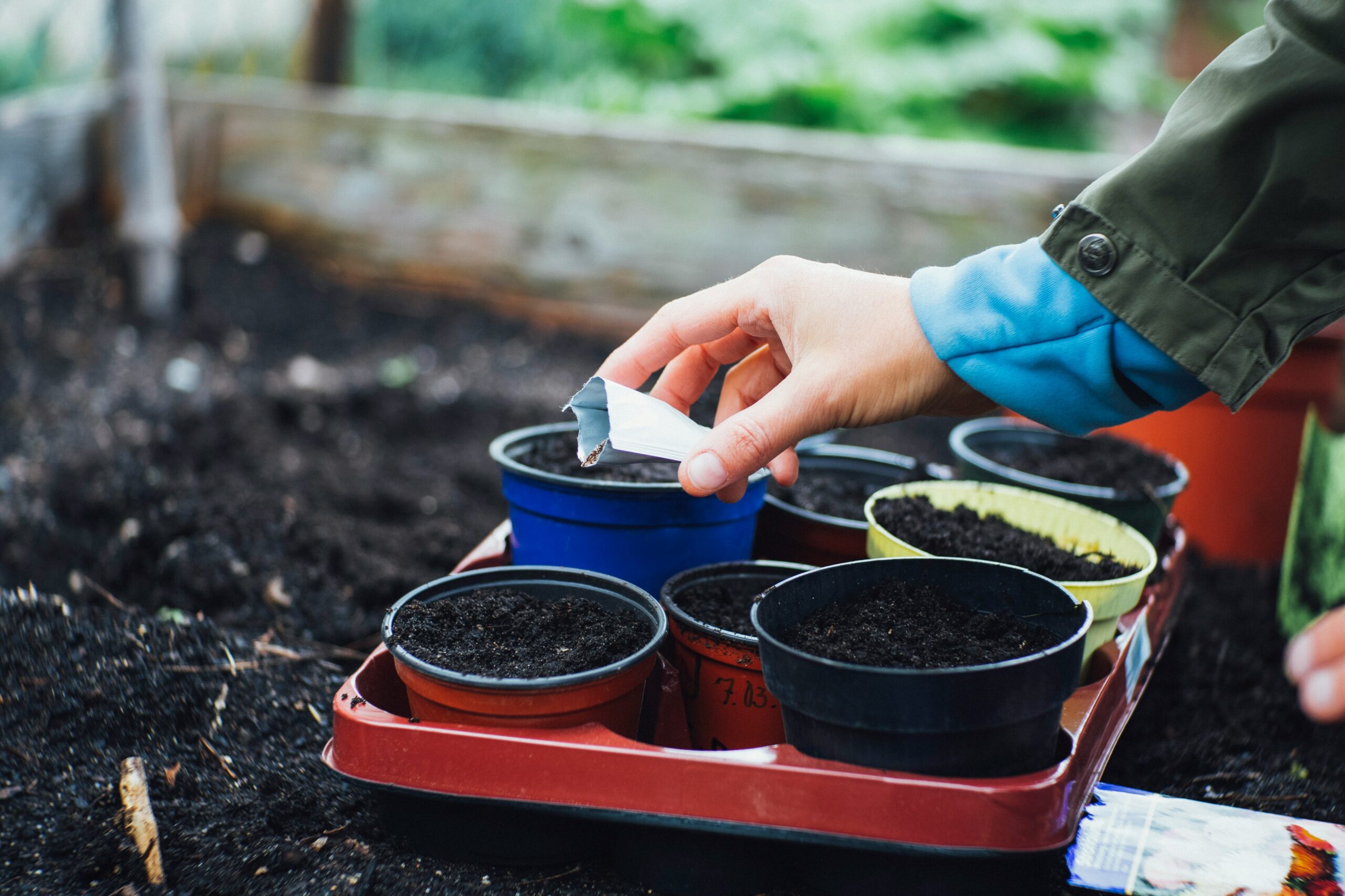
Ah, spring! As the days lengthen and nature bursts into life, gardeners eagerly turn their attention to starting seeds for the upcoming garden season. Whether your vision is a wildlife sanctuary, a pollinator haven for native bees, a bountiful vegetable patch for your family’s table, or a colourful flower garden to share joy with loved ones, it all begins with seeds. In this blog post, we’ll explore the advantages of starting seeds indoors, guide you on choosing and acquiring the right seeds, how and when to start your seeds, and showcase how Cultiville can be your trusted ally in this exciting seed-starting journey.
Indoor Seed Starting Benefits
Grow unique and rare varieties: Agriculture has a long history of over 12,000 years, which has led us humans to carefully select a wide range of plants. Some of these distinctive varieties, such as the flavorful Red Okra, are not typically found in stores or nurseries. By starting these seeds yourself, you open up exciting opportunities to experiment with different plants, enhancing both the diversity of your garden and the flavours on your plate.
Start gardening earlier: You don’t have to wait for the last frost or to have a garden plot ready to start gardening. By starting seeds indoors, you can kickstart your gardening season well ahead of the outdoor planting window, and shorten that perceived length of the off-season when we’re not actively gardening.
Save money: Seeds are typically more affordable than buying established plants from a garden centre. This cost-effective approach lets you grow a variety of plants without breaking the bank, making gardening accessible to budget-conscious gardeners.
Greater control: Starting seeds indoors generally improves your germination rates since you’re in a controlled environment. It also keeps those garden pests away while your plants start to grow. What’s more, starting seeds indoors lets you plan when to harvest! Need help planning your garden? Check out our previous blog post for tips.
Choosing the Right Seeds
Support local seed companies: When buying seeds, consider supporting local seed companies; the more local, the better. By choosing local seeds, you not only promote local businesses but also increase the likelihood of successful germination and growth in your garden. These companies sell seeds that are well-suited for your region’s climate and soil conditions.
Choose native varieties for pollinators: Native plants evolved alongside our local pollinators, and provide essential food sources and habitats. Adding native flowers in your garden not only supports pollinator populations and promotes a healthy ecosystem, but it increases the likelihood of successful pollination for your vegetables!
Which plants do best when started indoors: Annual flowers such as petunias, begonias, and celosias can really benefit from a controlled environment at the beginning. Leafy greens such as lettuce, spinach, and kale are ideal for indoor environments and are easy to grow from seeds. Remember that popular garden plants like tomatoes and peppers require more light for healthy indoor growth. Herbs like basil, parsley, and cilantro also flourish indoors, enhancing the flavours of your dishes. Avoid starting plants that don’t like root disturbance, like squash, melons, carrots, and radishes.
How to Start your Seeds
Seed starting mix: Once you’ve acquired your seeds, the next step is to choose a seed starting mix that is light and well-draining. The seed contains everything it needs to germinate, so the mix can be low in nutrients. This also prevents over-fertilization during the delicate seedling stage.
Pick your containers: Seeds are resilient things. Opt for eco-friendly options when selecting seed starting containers. Consider reusing seed starter trays or using recycled materials for DIY containers. Soil blocking is another innovative method where seedlings grow in compact blocks of soil, minimising waste and promoting healthy root development.
Grow lights and fans: While south-facing windows can provide initial light, it’s not great for robust seedling growth. Grow lights can provide enough light for most vegetables. Additionally, using fans in your indoor setup simulates natural wind, strengthening root and stem growth and preventing leggy seedlings.
When to Start your Seeds
Find a local seed calendar: To determine the best time for starting seeds indoors, consult a local seed calendar. These calendars provide valuable information on when to start specific seeds indoors and when it’s time to directly sow them outdoors. If you live in Montreal, or in a hardiness zone of 6a, Espace pour la vie has an amazing calendar for starting annual flowers as well as vegetable seeds.
Consider seed germination times: Different seeds have different thicknesses in their outer coating, affecting how long they take to sprout and grow. Lettuce seeds sprout quickly, but beans may take longer. Instead of following general rules, Check your seed packets, seek advice from others, and try experimenting to find the best approach!
Start your Gardening Journey with Cultiville
Need extra guidance on starting seeds indoors? With every Garden Patch reservation, you’ll receive a free Grow Guide tailored to your plot, filled with personalised tips and tricks. We also offer guided garden visits at the start of the season to assist you and your family in getting started. For more assistance, feel free to chat with us anytime!
Starting seeds indoors offers benefits like growing unique plants and having more control. Choose seeds wisely based on their germination times and consider native plants for pollinators. Use resources like local seed calendars and our Grow Guides for help. Feel free to reach out to us anytime for more tips!
Happy gardening!
Sophie
